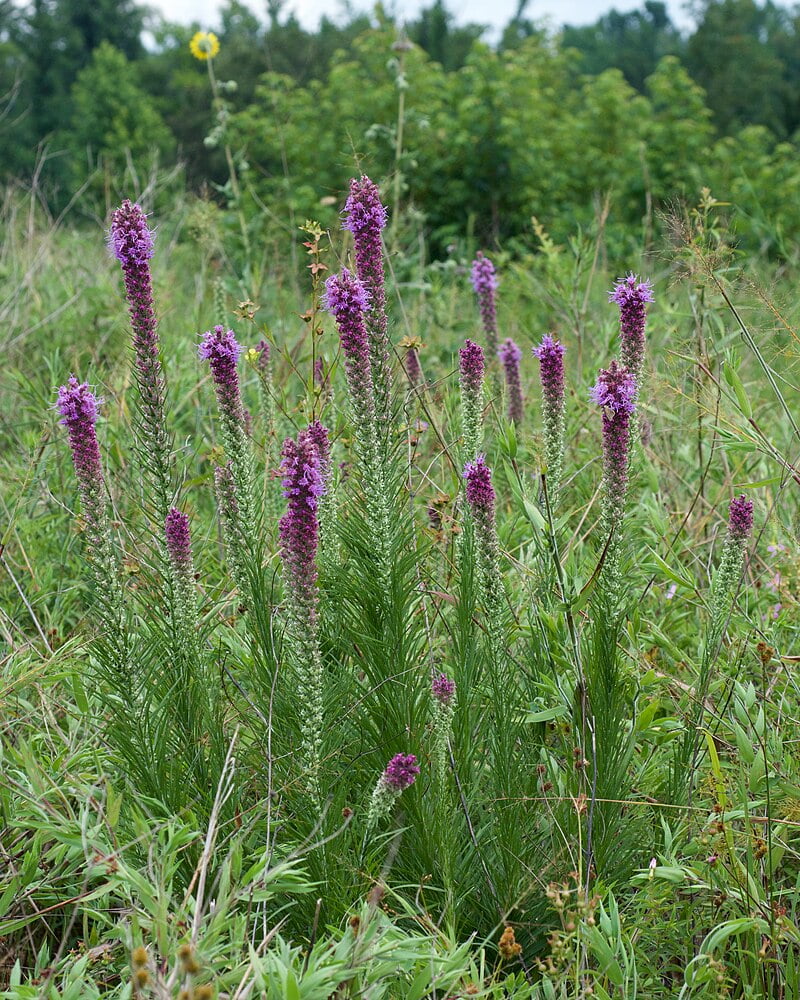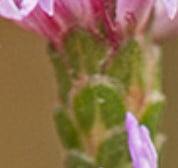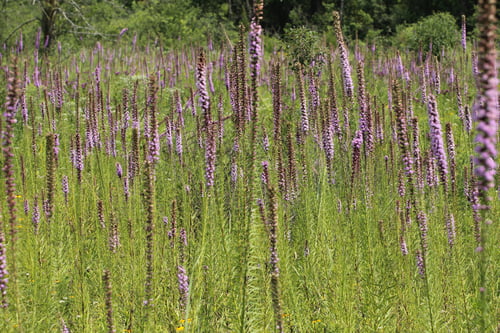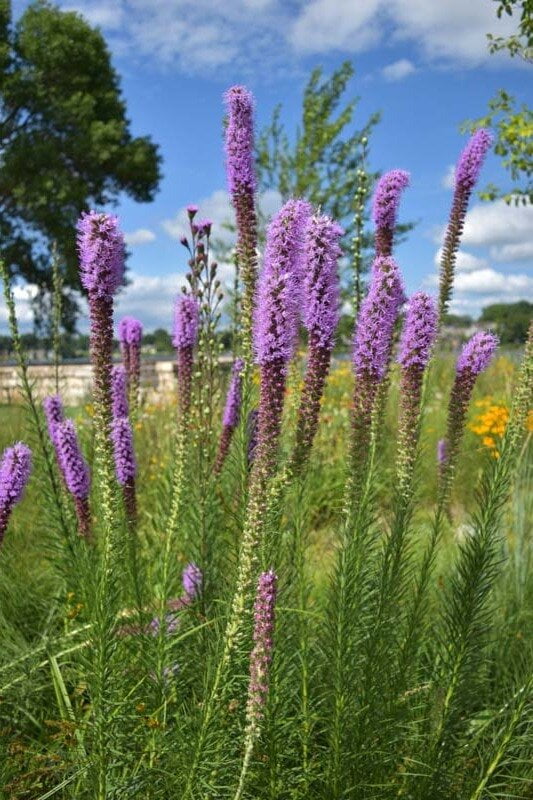Liatris Pycnostachya, commonly known as Prairie Blazing Star, and Liatris Spicata, also known as Prairie Blazing Star, as well as Dense Blazing Star and Spiked Gayfeather, are two species within the Liatris genus that exhibit remarkable similarities in their morphology. Despite their native ranges being separated by considerable geographic distances, these two species display exceptionally minor differences, particularly in their bracts. This observation has led to a hypothesis that human activities might have played a role in the spread of Prairie Blazing Star, resulting in its establishment in regions where it is now considered indigenous.

Native Ranges and Habitat
Liatris Pycnostachya is native to the central United States, thriving in upland savannas and grassy plains. Its range includes states such as Arkansas, Iowa, Illinois, Indiana, Kansas, Kentucky, Louisiana, Michigan, Minnesota, Missouri, Mississippi, Nebraska, North Dakota, Ohio, Oklahoma, Pennsylvania, South Dakota, Texas, and Wisconsin.
On the other hand, Liatris Spicata is primarily found in the southeastern United States, including Florida, Georgia, Alabama, and extending northward to New York and New Jersey. It prefers moist meadows, marsh edges, and other wetland habitats.

25 Prairie Blazing Star Seeds (Liatris Pycnostachya/Spicata)
Bring the majestic beauty of the Prairie Blazing Star (Liatris pycnostachya) to your garden. Known for its tall, dense spikes of vibrant purple flowers, this perennial is a stunning addition to any landscape. At Johnny Butterflyseed, we offer high-quality seeds that promise to transform your garden into a pollinator’s paradise. 20 seeds. USDA Zones 3a-10.
Morphological Differences
The most notable morphological difference between Liatris Pycnostachya and Liatris Spicata lies in their bracts. Bracts are the modified leaves that surround the flower heads. In Liatris Pycnostachya, the bracts are typically pointed and more rigid, whereas in Liatris Spicata, the bracts are usually rounder and more flexible. Despite this distinction, the overall appearance of both species is strikingly similar, with tall, spike-like inflorescences adorned with purple flowers.


Hypothesis: Human-Mediated Distribution
Given the minor morphological differences between the two species, it is plausible to hypothesize that Prairie Blazing Star (Liatris Pycnostachya) was introduced to Florida through human activities, where it adapted to the local environment and became known as Liatris Spicata. The movement of plant species by humans, whether intentional or accidental, has a long history. Early settlers, agricultural practices, and ornamental gardening could have facilitated the spread of Prairie Blazing Star to regions outside its native range.
Supporting Evidence
The hypothesis is supported by the fact that both species can thrive in similar environmental conditions, albeit with slight preferences for moisture levels. The adaptability of Liatris species to various habitats makes them suitable candidates for naturalization in new areas. Furthermore, the exceptionally minor differences in bract morphology suggest a close genetic relationship, reinforcing the idea of a common origin.

Unanswered Questions
Despite the compelling hypothesis, several questions remain unanswered. One intriguing aspect is whether there are pointy-bracted Prairie Blazing Stars (indicative of Liatris Pycnostachya) present in Florida or if round-bracted individuals (indicative of Liatris Spicata) can be found in the northern parts of the Prairie Blazing Star’s native range. Extensive field studies and genetic analyses are needed to explore these possibilities and provide definitive answers.
Conclusion
The comparison of Liatris Pycnostachya and Liatris Spicata highlights the fascinating nuances of plant morphology and distribution. The hypothesis that human activities might have facilitated the spread of Prairie Blazing Star to Florida, where it is now recognized as Liatris Spicata, opens up new avenues for research and understanding plant migration patterns. As we continue to explore the complexities of plant species and their histories, we may uncover further insights into the intricate web of natural and human-mediated dispersal mechanisms.

My first try of finding a vouchered Florida-Native Liatris spicata displaying morphological traits of L. pycnostachya:
https://cdn.plantatlas.org/img/specimens/USF/209950.jpg
As the very first Botonist to reside fully in Florida, it would be hard to dispute the identification by Dr. Curtiss, however his L. spicata specimen certainly displays pointed bracts known to L. pycnostachya. Could these two species be distant members of the same family? Regardless, Prairie Blazing Star belongs in Florida and the Central USA.